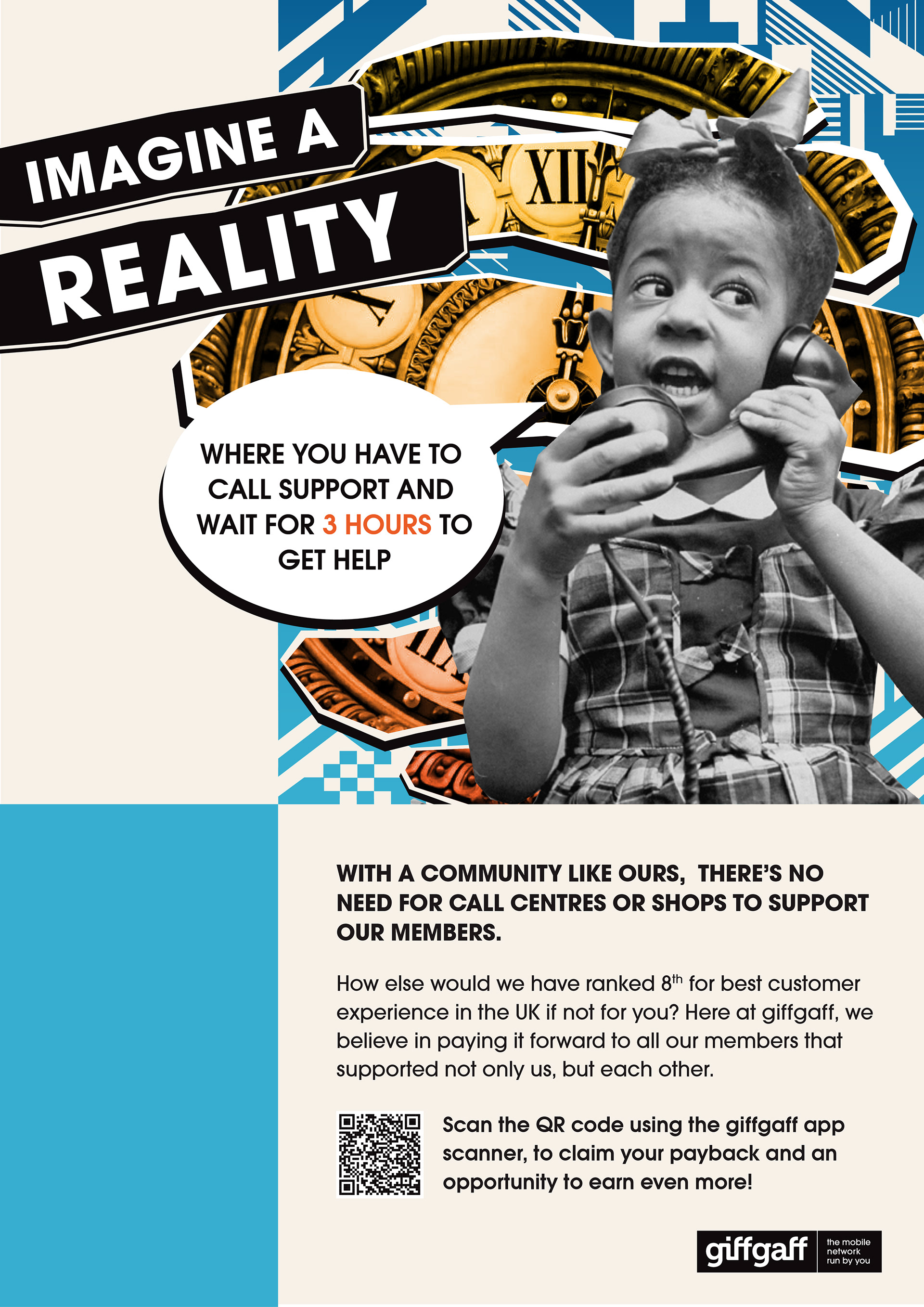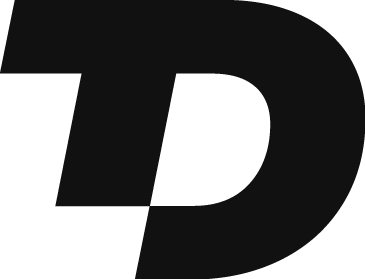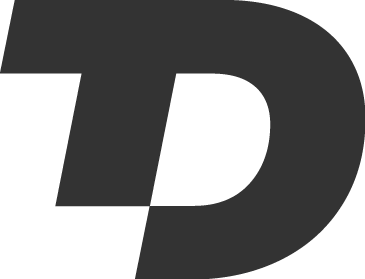BRIEF
To launch a digital or real world campaign for giffgaff, promoting the core values of the brand which rely on the concept of ‘mutual giving’.
RESPONSE
Introduction of Imagine A Reality campaign, as a way for giffgaff to thank its community for the support, while showcasing the many benefits enjoyed by its members to potential customers.
A main feature of the campaign is use of augmented reality to reward engagement with the print advertisements found all over London, in order to earn prizes and gain discounts for new members.
PROCESS
Our group consisted of me and Fay Biggs, a course mate from University of Reading. Fay was responsible for the motion graphics video, in order to showcase the augmeneted reality features of the campaign, while I worked on the static posters & the assets used for the motion graphics video.
In the early stages of developing the campaign, we experimented with different copywriting, which started with a toungue in cheek language to call out the disadvantages of other mobile telephone networks, but later changed to a more sincere and positive character, directed towards current and future members of the community, to extend a thank you from giffgaff.



AUGMENTED REALITY
Users can scan the QR code on the printed posters using the official giffgaff app which already exists, in which we prototyped a new tab, offering the option to scan augmented reality codes in a camera function.
Once the users scan the code, an interactive version of the poster appears which can be clicked on to communicated with the user and at the end, offer them a reward in the form of goody bags.
After receiving the initial reward, users have the option to create their own personalised giffgaff sticker with a custom QR code. When that code is scanned, both the user who created the sticker and the person who scanned it are rewarded, while also giving the ability to the initial user to share a personalised interactive poster in the form of a meme.
TYPOGRAPhY
In addition to the two typefaces used for the brand identity of the campaign (Lato for digital deliverables and Avant Garde for physical deliverables), a double layer typeface was created using Avant Garde Bold and the digital noise texture that is part of the giffgaff branding.
The typeface created for the campaign serves as a scannable QR code on the user generated stickers, spelling the name of the user.

